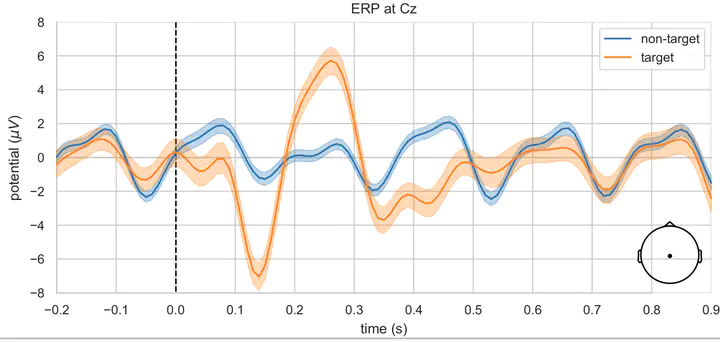Estimating ERP Classification Performance from Oscillations
Decoding and predicting the performance of an ERP decoding pipeline based on oscillatory features of EEG recordings

Context
Many experimental protocols for brain-computer interfaces (BCIs) present a sequence of stimuli to the user. By attending one type of stimulus and by ignoring other stimuli, so-called target and non-target responses are evoked, which can be measured by M/EEG and decoded by the BCI. This decoding of the attended stimulus (word, symbol on screen etc.) and discriminating it from non-attended stimuli is a classification task. It typically is solved by a a machine learning model, e.g., linear discriminant analysis (LDA). Once trained on labeled brain signal data, it can be applied to novel data. In practise, applying the classification model reveals variation of the decoding performance between repeated trials, i.e., the selection of a word or a symbol to be spelled. While such performance variation can have many possible causes including external technical noise, they may also reflect different attention states of the user or a competitive activation of different brain networks.
Research question
Are classification performance variations reflected in oscillations present in the EEG?
Which frequency band(s) and time intervals are informative?
Can oscillatory features be predictive about upcoming ERP classification performance?
Skills required:
- BCI background by accomplished course SOW-BKI 323 or SOW-MKI 74, specifically spatial subspace analysis methods
- Good programming skills in Python (familiarity with numpy, sklearn)
- Good mathematical background and intuition
- Machine learning